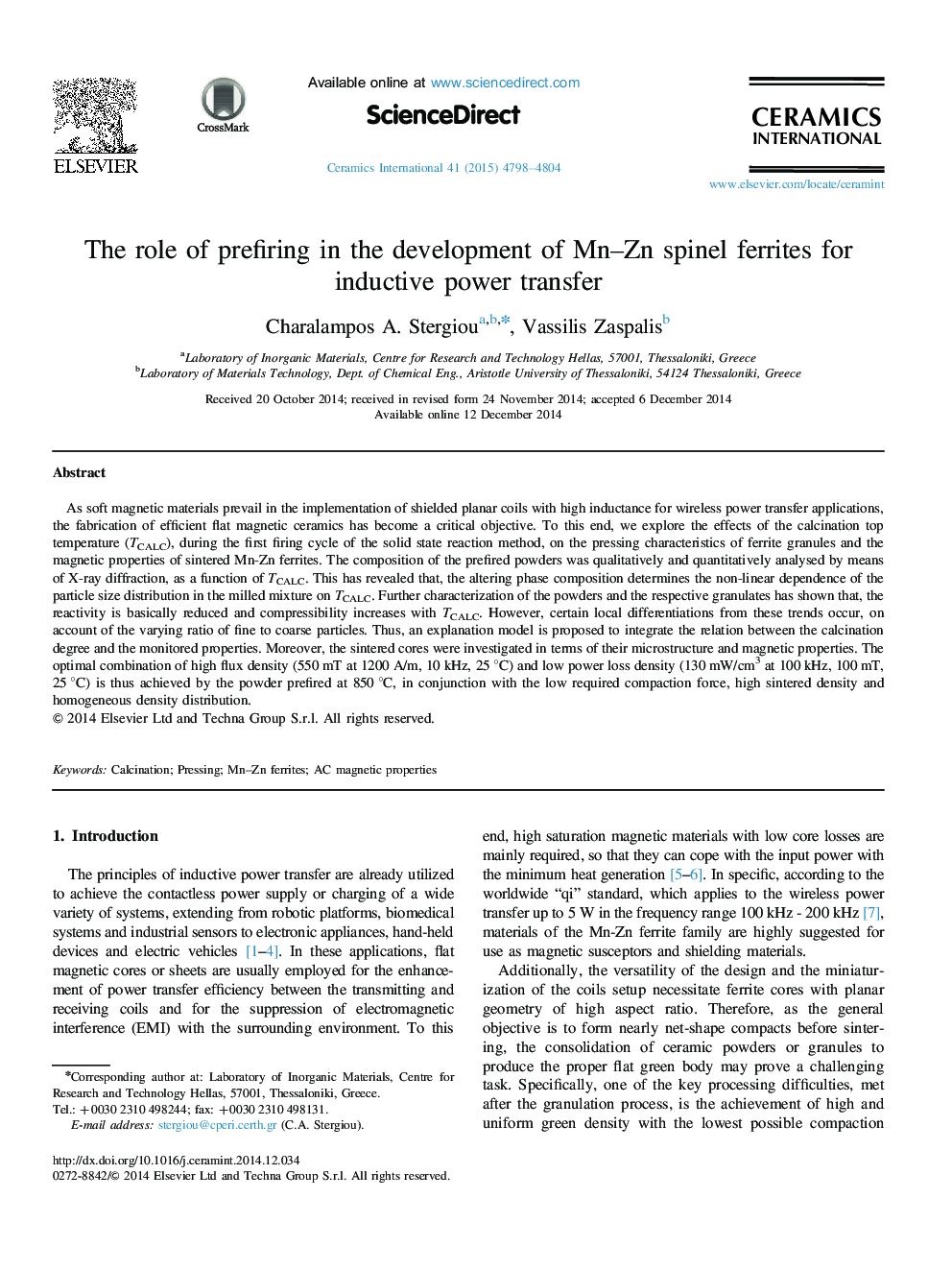| Article ID | Journal | Published Year | Pages | File Type |
|---|---|---|---|---|
| 1460361 | Ceramics International | 2015 | 7 Pages |
As soft magnetic materials prevail in the implementation of shielded planar coils with high inductance for wireless power transfer applications, the fabrication of efficient flat magnetic ceramics has become a critical objective. To this end, we explore the effects of the calcination top temperature (TCALC), during the first firing cycle of the solid state reaction method, on the pressing characteristics of ferrite granules and the magnetic properties of sintered Mn-Zn ferrites. The composition of the prefired powders was qualitatively and quantitatively analysed by means of X-ray diffraction, as a function of TCALC. This has revealed that, the altering phase composition determines the non-linear dependence of the particle size distribution in the milled mixture on TCALC. Further characterization of the powders and the respective granulates has shown that, the reactivity is basically reduced and compressibility increases with TCALC. However, certain local differentiations from these trends occur, on account of the varying ratio of fine to coarse particles. Thus, an explanation model is proposed to integrate the relation between the calcination degree and the monitored properties. Moreover, the sintered cores were investigated in terms of their microstructure and magnetic properties. The optimal combination of high flux density (550 mT at 1200 A/m, 10 kHz, 25 °C) and low power loss density (130 mW/cm3 at 100 kHz, 100 mT, 25 °C) is thus achieved by the powder prefired at 850 °C, in conjunction with the low required compaction force, high sintered density and homogeneous density distribution.
